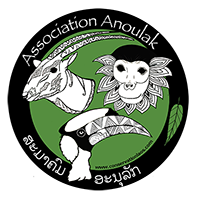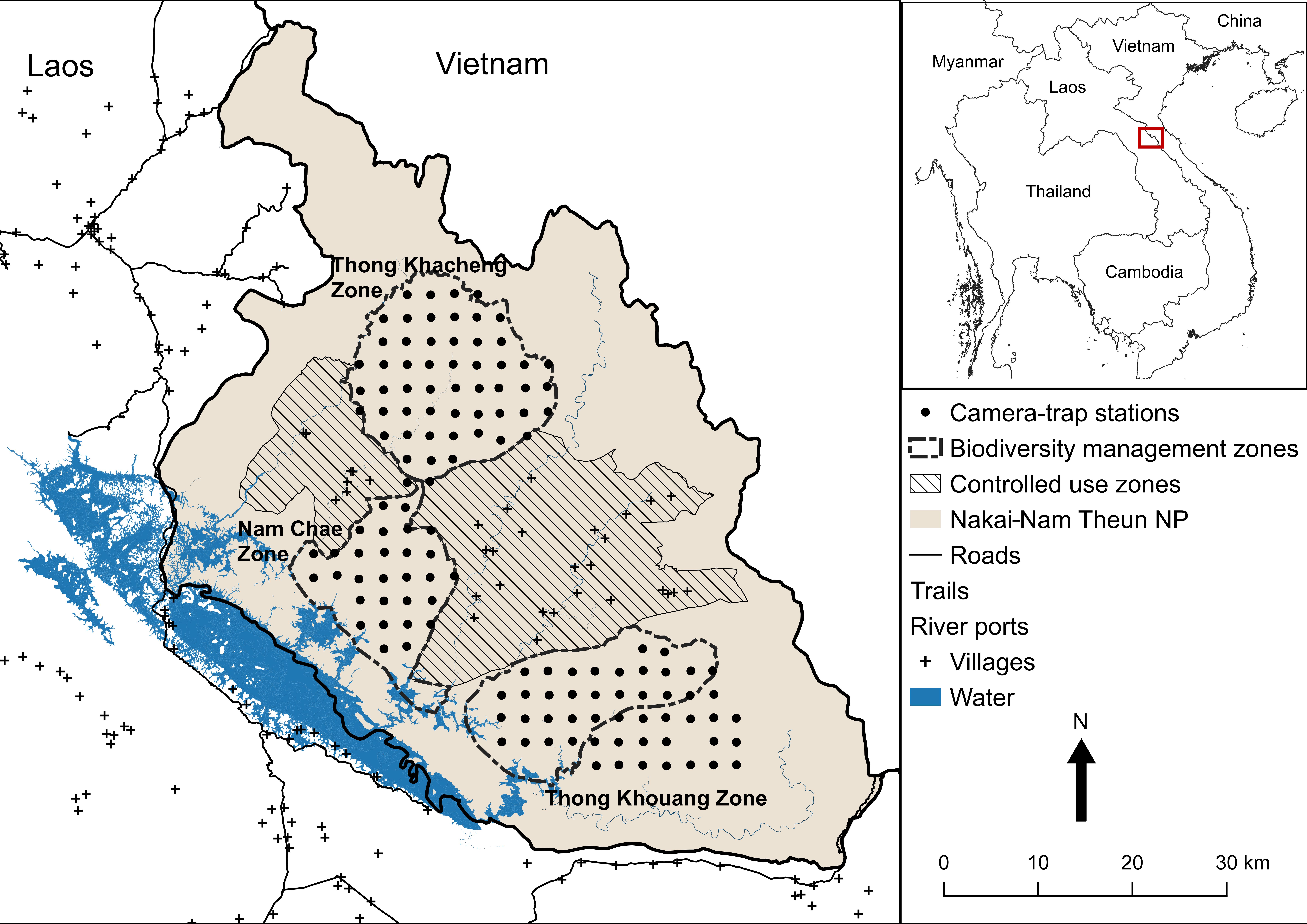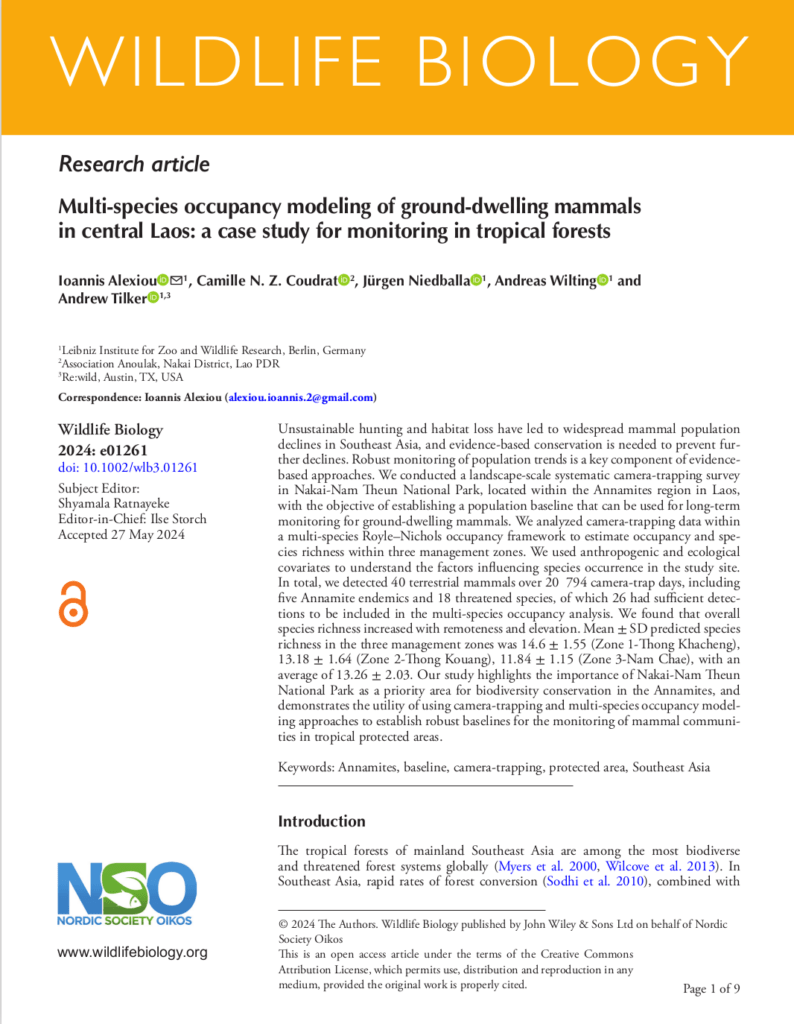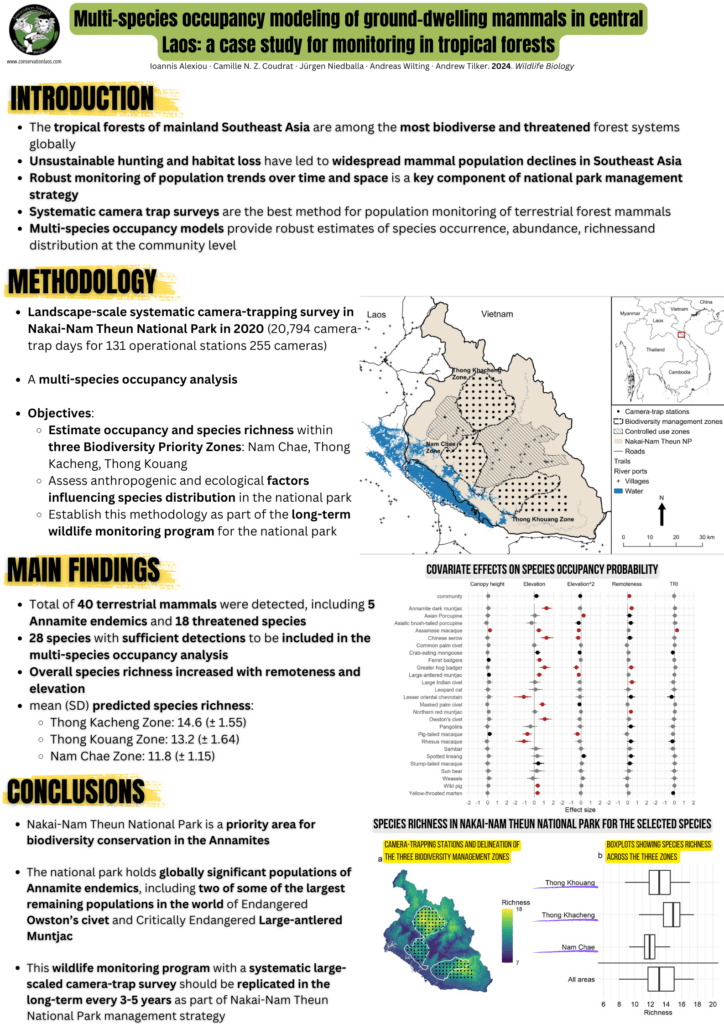
Gibbon conservation under climate change: Workshop participation in Vietnam
June 26, 2024
Inspiring the new generation of Lao nationals to pursue careers in nature conservation
October 14, 2024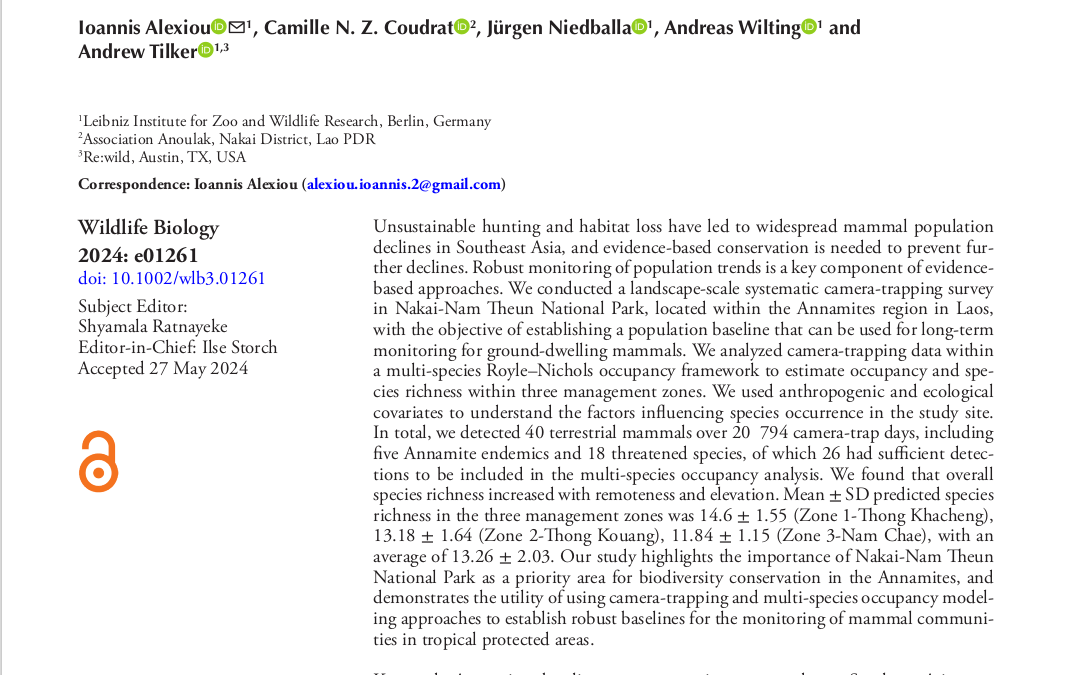
We are pleased to share our new publication in Wildlife Biology: Multi-species occupancy modeling of ground-dwelling mammals in central Laos: a case study for monitoring in tropical forests
In this study, we conducted a landscape-scale systematic camera-trapping survey in Nakai-Nam Theun National Park in 2020 (20,794 camera-trap days for 131 operational stations 255 cameras) and applied a multi-species occupancy analysis on our dataset.
Objectives:
- Estimate occupancy and species richness within three Biodiversity Priority Zones: Nam Chae, Thong Kacheng, Thong Kouang
- Assess anthropogenic and ecological factors influencing species distribution in the national park
- Establish this methodology as part of the long-term wildlife monitoring program for the national park
Our main findings:
- Total of 40 terrestrial mammals were detected, including 5 Annamite endemics and 18 threatened species
- 28 species with sufficient detections to be included in the multi-species occupancy analysis
- Overall species richness increased with remoteness and elevation
- Mean (SD) predicted species richness in surveyed areas:
- Thong Kacheng Zone: 14.6 (± 1.55)
- Thong Kouang Zone: 13.2 (± 1.64)
- Nam Chae Zone: 11.8 (± 1.15)
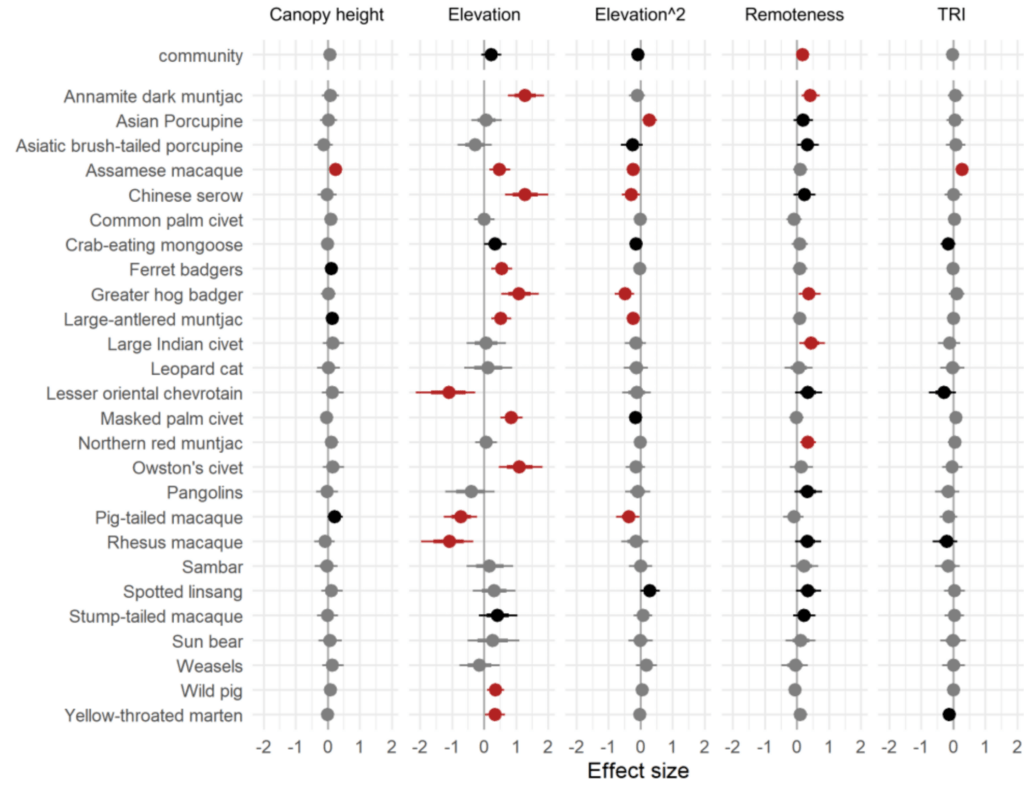
Species richness in Nakai-Nam Theun National Park for the selected species
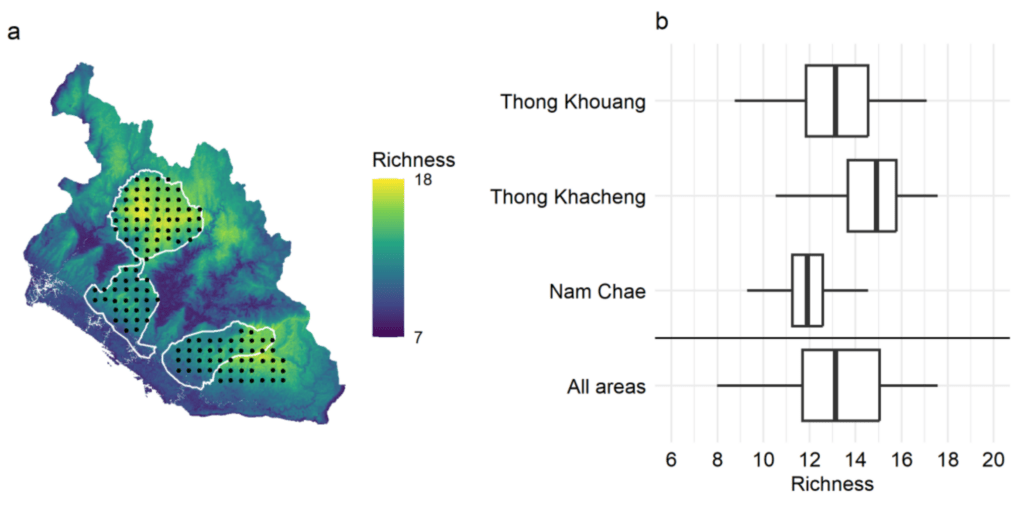
Covariate effects on species occupancy probability
Our conclusions:
- Nakai-Nam Theun National Park is a priority area for biodiversity conservation in the Annamites
- The national park holds globally significant populations of Annamite endemics, including two of some of the largest remaining populations in the world of Endangered Owston’s civet and Critically Endangered Large-antlered Muntjac
- This wildlife monitoring program with a systematic large-scaled camera-trap survey should be replicated in the long-term every 3-5 years as part of Nakai-Nam Theun National Park management strategy
